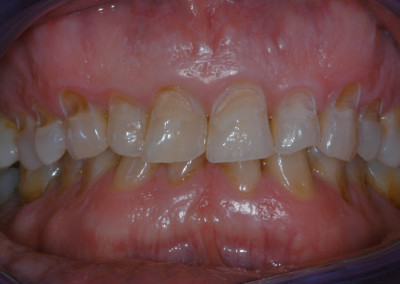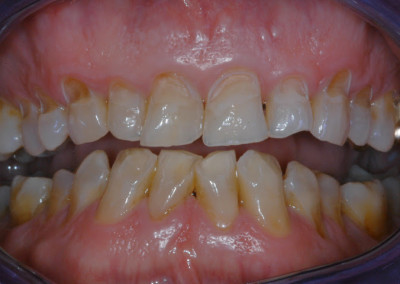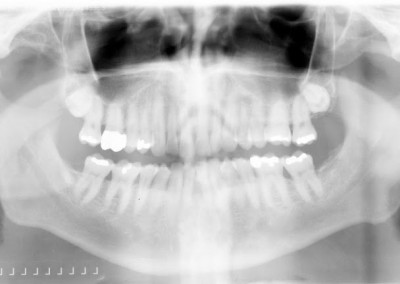This patient has numerous abfractions, all different and unique. The patient does have sleep apnea, but has never complained of acid reflux. He also has not been diagnosed with GERD.
I would argue that this occlusion is healthy, and functions very well. The problem is in the symmetry of the teeth in relation to the bones. Two lower incisors were extracted and the lower arch is wedged into the upper arch in function. The perio/bone interface is strong, but the teeth do not receive force directed along the long axis of the roots (see Abfraction Concept). This 60 year old man with an orthodontic history has an exceptionally nice radiograph image. Healthy condyles, strong muscles and a closed vertical all produce a powerful force on some very strong teeth.
I love force patterns that have a perfect repetition and character. The 2-D Habitual Force Movie is slightly off center to the left and each closure envelope has a jerky line. Watch the movie a couple of times and notice how the center of force line is trying to tell you that the occlusion is wedged. Each tiny shift in the force engagement of the teeth are micro deflections because the dentition is torqued in-between the bones in function.
FUNCTION HEALTH
This patient has little concern for cosmetics. He has no problems while eating, no reflux issues or excessive stomach acid, no teeth sensitivity,and he has no periodontal pockets. The problem is that the teeth are not directed along their long axis and are basically in the way of the bones. Teeth are living tissue and adapt to a more condensed morphology. **Please note that every tooth has its own perfect unique abfraction shape. This is a pure abfraction case rather than an erosion case.**
FUTURE CONSIDERATIONS…
A series of two to three limited equilibrations, three months apart, would improve balance, lateral slides, and protrusive slides. The abfraction stress can be covered with direct bonding, veneers or full mouth reconstruction to any vertical desired. This patient chose direct bonding.



